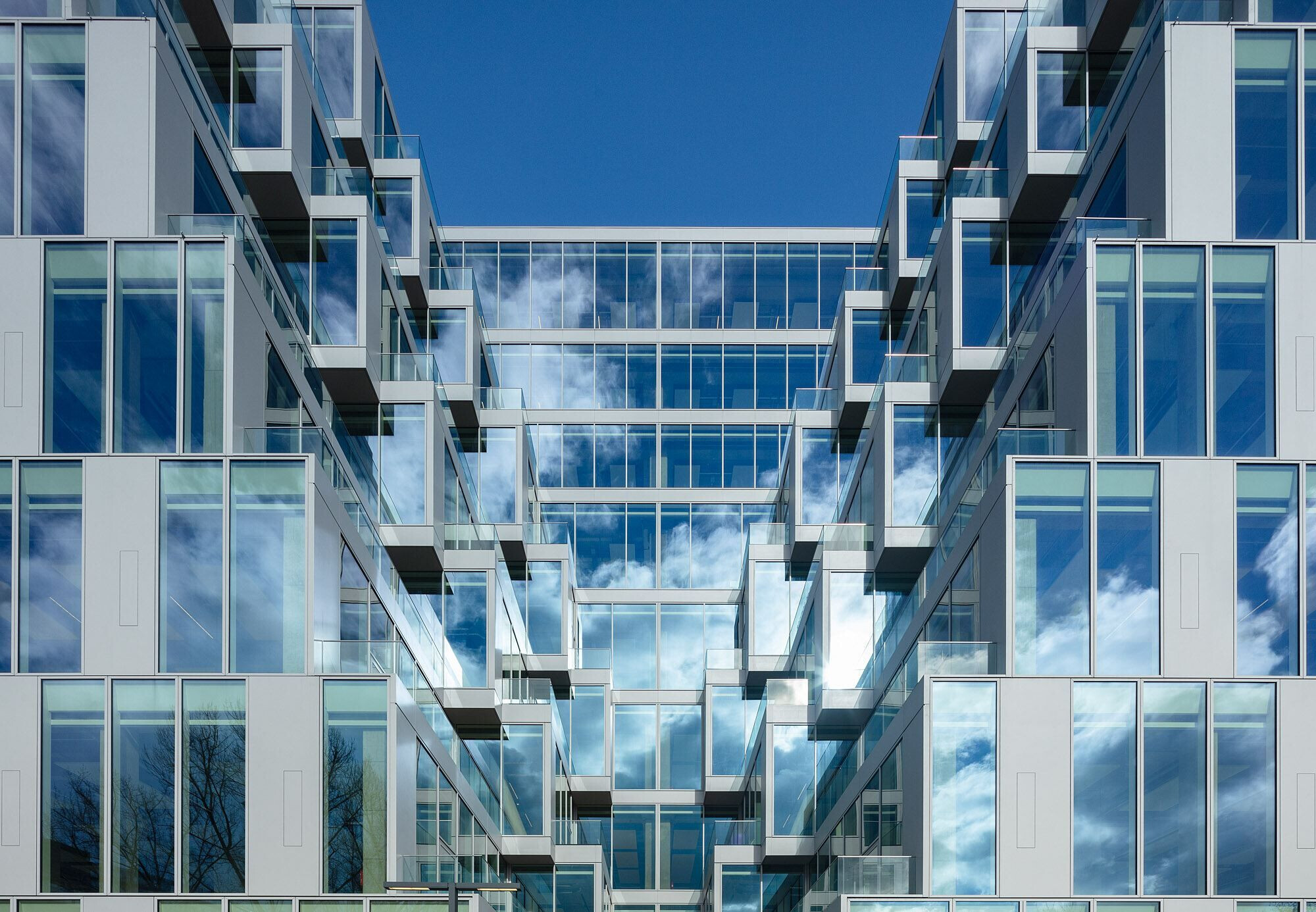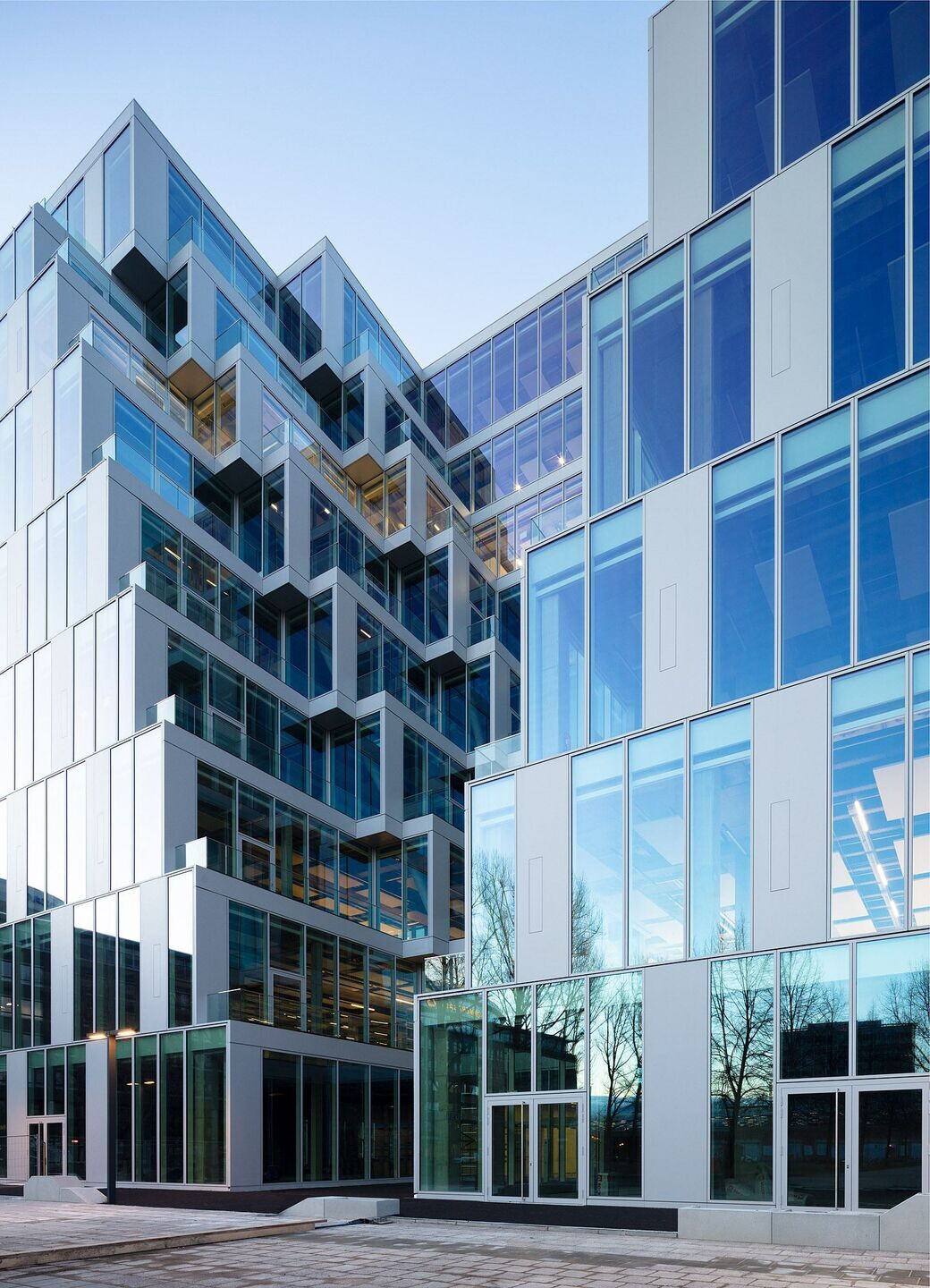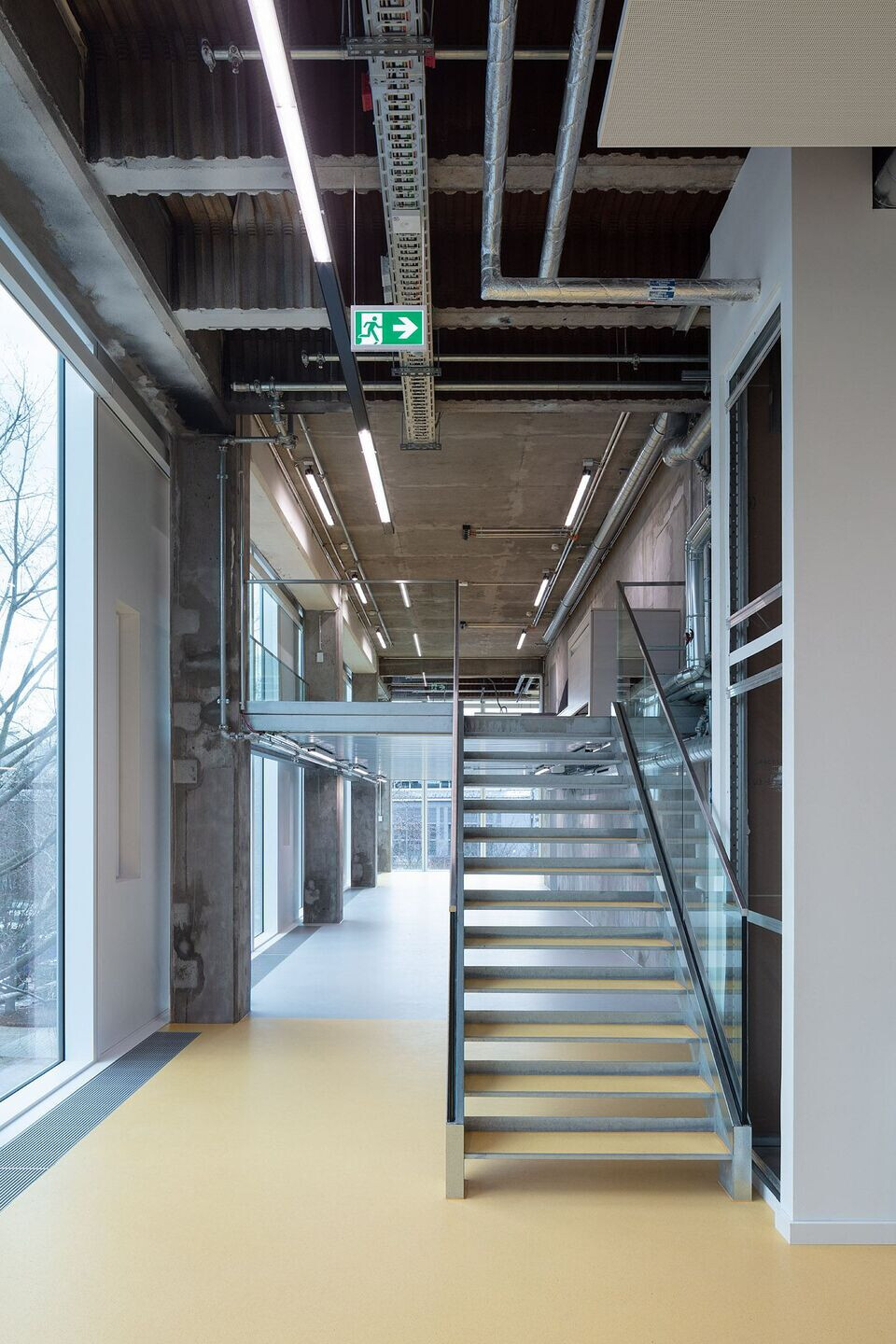A new chapter for an icon of Berlin’s city history: In 2016 Martin Jasper and his team at JASPER ARCHITECTS created the winning design for the competition organized by SIGNA, for an overall transformation of the former "Centrum Warenhaus", built in 1979. The competition task was to present a concept to turn this massive squared building block of 80x80 m and 67,000 m2 into office space for the digital era.

The department store was originally conceived as an introverted building without openings. That principle had to be reversed: the natural lighting was a major challenge. The idea presented by JASPER ARCHITECTS was to cut out triangular-shaped prisms on each side of the squared building to flood the interior with natural light and by this, loosen up the massive monolithic geometry.

The lost floorspace was regained by two floors added on the top of the existing structure, plus a roof pavilion and extensive rooftop terrace. These "voids" redefine the building’s urban presence entirely. The project reveals the building’s past and points to the future with a new, entirely glazed envelope.

“As an office that worked a lot in Buenos Aires, the dimensions of the UP! were all too familiar for us: the existing building looked like a monolithic extrusion of a typical city block of the city. Those keep confronting the architects with one main challenge: How is the provision of natural lighting dealt with? Cuts of all sizes and forms are made into the urban mass and urban planning regulations of different times overlap - those create complex urban geometries that always arise from the same squared base of the city block. For us, this was an inspiration for our proposal for the UP!" (Martin Jasper)

SIGNA then commissioned JASPER ARCHITECTS in a planning partnership with the local office GEWERS PUDEWILL for the General Planning of the renovation. In a first step, the building was gutted - the entire existing facade was removed and the building block was reduced to its concrete skeleton.

With huge circular saws, the voids were cut out of the old structure. What remained, was a regular grid of concrete columns and four empty cores. Parts of the history of the building were uncovered: the patina of decades of history became visible; old technical infrastructure and rusty traces became visible and were kept in place. The rough, industrial charm became a canvas for the new.

The facade is composed of fully glazed and opaque modules with integrated casements, distributed in a ratio of three to one to provide the necessary amount of shade for sunlight regulation. In the voids, glass doors give access to the terraces. The old skeleton is revealed to passers-by behind the new glazed envelope, and from the inside, the urban environment can be experienced as a full panorama view from all levels.

Meeting room boxes and translucent cast-glass walls were distributed strategically together with a flooring color concept according to Studio Aisslinger's concept. What was once an interior-focused shopping center has been reimagined as an outwardly focused center for productivity, creativity, and community.

Material Used:
1. Facade: Element Façade, Glass and Aluminum Framing, Production Rupert App GmbH
2. Flooring: Rubber Flooring, Nora, Noraplan
3. Building Automation: Siemens
4. Interior Fit Out: Dry Wall System, Cubo Raum im Raum, Knauf
5. Interior Lobby Cladding: Expanded Metal, Lindner


















































